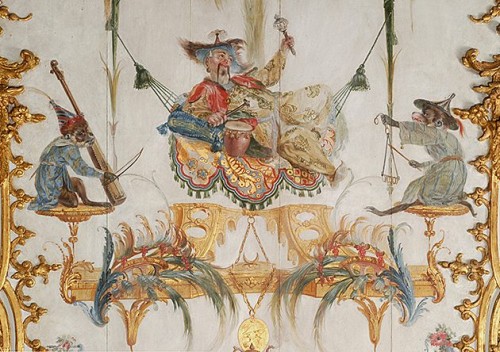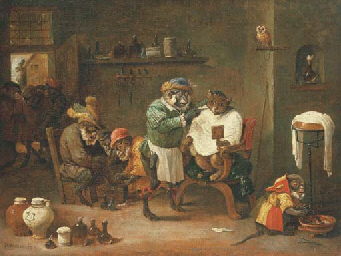Singerie (n): a picture, decoration, or design in which monkeys are depicted
The definition above is pretty broad actually. What we really want to focus on is the singeries during the Rococo period that became popular after chinoiserie style. In the image above, it's easy to see how singeries merge quite well with the oriental style as they are both whimsical and unrealistic. In French, the word "singerie" translates literally into "Monkey Trick" and depicts monkeys performing human acts and dressed in human garments. It's debated that the style is actually a less-than-subtle commentary on pre-Darwinism and how humans evolved from their animal counterpart.
Like other artistic styles, the singerie grew overtime to merge with Chinese and other Asian influences. It started out with monkeys in Parisian clothing and soon they were in ethnic dress. Monkeys have always been considered tools for humor; at the time, it was popular to have them perform tricks in costumed garments. This idea of using an animal to portray light-heartedness is appropriate to the Rococo because the belief at the time was to promote joy. Singerie did not spread too far outside of France where it originated.
Sources:
http://en.wikipedia.org/wiki/Singerie
http://www.merriam-webster.com/dictionary/singerie
http://www.britannica.com/EBchecked/topic/545822/singerie
http://lifetakeslemons.wordpress.com/2011/05/16/singerie-a-k-a-the-monkey-craze/



No comments:
Post a Comment